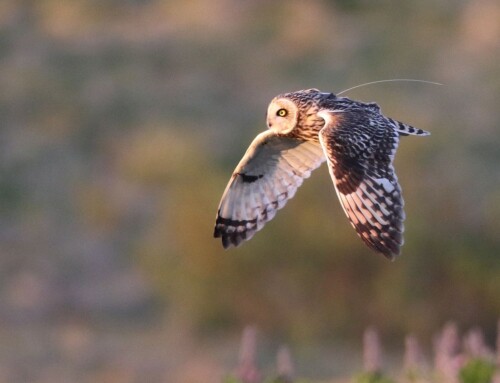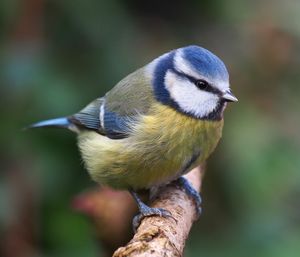 LINKED PAPER
LINKED PAPER
Bird populations most exposed to climate change are less sensitive to climatic variation. Bailey, L.D., van de Pol, M., Adriaensen, F., Arct, A., Barba, E., Bellamy, P.E., Bonamour, S., Bouvier, J-C., Burgess, M.D., Charmantier, A., Cusimano, C., Doligez, B., Drobniak, S.M., Dubiec, A., Eens, M., Eeva, T., Ferns, P.N., Goodenough, A.E., Hartley, I.R., Hinsley, S.A., Ivankina, E., Juškaitis, R., Kempenaers, B., Kerimov, A.B., Lavigne, C., Leivits, A., Mainwaring, M.C., Matthysen, E., Nilsson, J-Å., Orell, M., Rytkönen, S., Senar, J.C., Sheldon, B.C., Sorace, A., Stenning, M.J., Török, J., van Oers, K., Vatka, E., Vriend, S.J.G. & Visser, M.E. 2022 Nature Communications. doi: 10.1038/s41467-022-29635-4 VIEW
In 2022, we celebrate the 75th anniversary of the Wytham Tit Project and their fantastic work on two of Europe’s most recognizable woodland bird species: Great Tits (Parus major) and Blue Tits (Cyanistes caeruleus). Scientific research projects of this length provide us with invaluable knowledge about the natural world and are particularly important in documenting the impacts of human-driven climate change.
One of the most noticeable consequences of climate change is the earlier occurrence of seasonal events, like the flowering of plants and nesting of birds. By monitoring animals and plants over many years we can document these changes precisely. In the Wytham Tit Project, for example, increasingly warm spring temperatures have driven Great and Blue Tits to lay their eggs around half a month earlier than they did 2 decades ago. But it remains unclear if all populations of a species respond in the same way. Will Great and Blue Tits in other locations show similar responses to increasing temperature? This is a question we wanted to answer through a large European scientific collaboration, published this year in the journal Nature Communications.
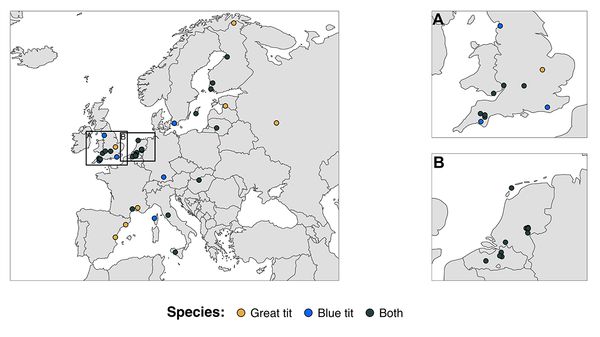
Figure 1 A European collaboration of Great and Blue Tit researchers. Data were collated from 67 long-term studies across 13 countries (34 Great Tit, 33 Blue Tit). Insets A and B show the location of study populations in the UK and the Netherlands & Belgium respectively.
Our project, organised through the SPI-Birds network (Culina et al., 2021), brought together data from 67 long-term populations of Great and Blue Tits across 13 European countries. Our goal was to measure the amount of change in egg laying date in each population as a response to increasing temperature: the ‘sensitivity’ of a population (Thackeray et al., 2016). We then investigated whether this sensitivity was different across the populations we studied.
We found that a 1oC increase in temperature can lead to very different changes in Great and Blue Tit egg laying dates across Europe, with more than a 3-fold difference in sensitivity between populations of the same species! Differences between populations aren’t just random either. Birds living in deciduous dominated habitats, like many of the study populations in the UK, show a much larger change in egg laying date in response to temperature than birds in evergreen habitats.
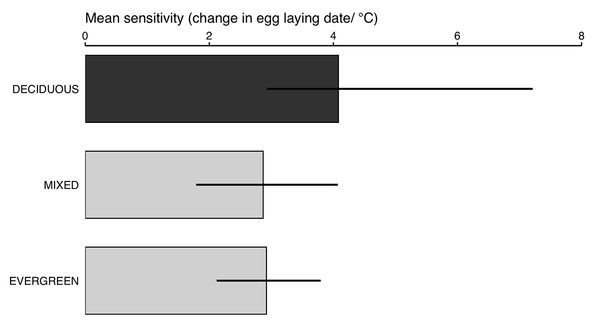
Figure 2 Birds in deciduous habitats (dark grey bar) were significantly more sensitive to temperature change than birds in either mixed or evergreen habitats (light grey bars).
Understanding sensitivity is not enough
Our research showed that different bird populations of the same species can have very different sensitivity to temperature change. Does this mean that more sensitive populations, like those in deciduous habitats, will experience rapid shifts in egg laying date? The answer is not that simple. Just as populations can differ in their sensitivity, they can also differ in their exposure to the effects of climate change. For example, temperature is increasing more rapidly at more northerly latitudes than areas further south, a process known as ‘Arctic amplification’ (Serreze and Barry, 2011).
When we consider local rates of climate change, we get a more accurate picture. While birds in deciduous habitats tend to be more sensitive, many of these populations are found in areas that have experienced relatively mild effects of climate change. In comparison, while populations at northern latitudes have experienced more rapid climate change, many of these populations are not in deciduous habitats and so are less sensitive to temperature change. Only by measuring both the local sensitivity of a population and the local rate of climate change can we really predict how egg laying date will change in a population.
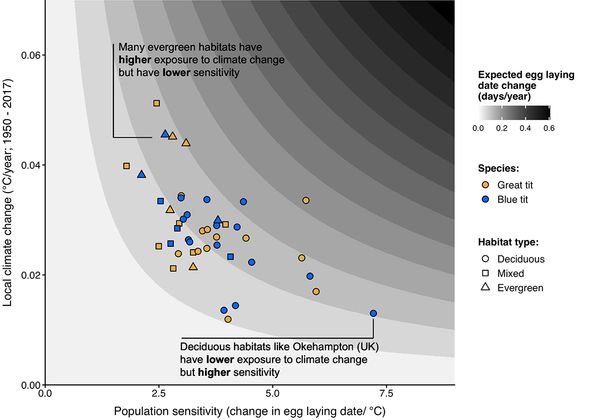
Figure 3 Relationship between local climate change and population sensitivity. Many populations in deciduous habitats have higher sensitivity but have had lower exposure to climate change.
What does this mean for birds?
Human-driven climate change is shifting the timing of seasonal events in the natural world, yet the response of different plants and animals to climate change is not always the same (Thackeray et al., 2016). Through our research, we found that even different populations of the same species can respond to climate change differently. The insights that we gain from a single population, even a long-term research project, may not be fully representative of a species in other parts of its range.
So, what does this mean for species like Great and Blue Tits? This all depends on how other animals and plants in the ecosystem are responding to our warming world. If egg laying date of a bird population shifts at a different rate to changes in the life-cycle of its prey, this can lead to a mismatch in the ecosystem – with potential negative consequences as birds may not have enough resources to feed their young (Visser and Gienapp, 2019). Unfortunately, in many areas where we collect data on birds, we have less information about other species in the ecosystem, such as invertebrates and plants. Expanding long-term projects to consider the impacts of climate change on multiple species within an ecosystem will help us better understand the consequences of increasing global temperatures.
References
Culina, A., Adriaensen, F., Bailey, L.D., Burgess, M.D., Charmantier, A., Cole, E.F., Eeva, T., Matthysen, E., Nater, C.R., Sheldon, B.C., et al. 2021. Connecting the data landscape of long-term ecological studies: the SPI-Birds data hub. Journal of Animal Ecology 90: 2147-2160. VIEW
Serreze, M.C. & Barry, R.G. 2011. Processes and impacts of Arctic amplification: a research synthesis. Global and Planetary Change 77: 85-96. VIEW
Thackeray, S.J., Henrys, P.A., Hemming, D., Bell, J.R., Botham, M.S., Burthe, S., Helaouet, P., Johns, D.G., Jones, I.D., Leech, D.I., et al. 2016. Phenological sensitivity to climate across taxa and trophic levels. Nature 535: 241-245. VIEW
Visser, M.E. & Gienapp, P. 2019. Evolutionary and demographic consequences of phenological mismatches. Nature Ecology and Evolution 3: 879-885. VIEW
Image credit
Top right: Blue Tit, Cyanistes caeruleus, Lancashire, UK © Francis Franklin CC BY-SA 4.0 Wikimedia Commons.
If you want to write about your research in #theBOUblog, then please see here.




